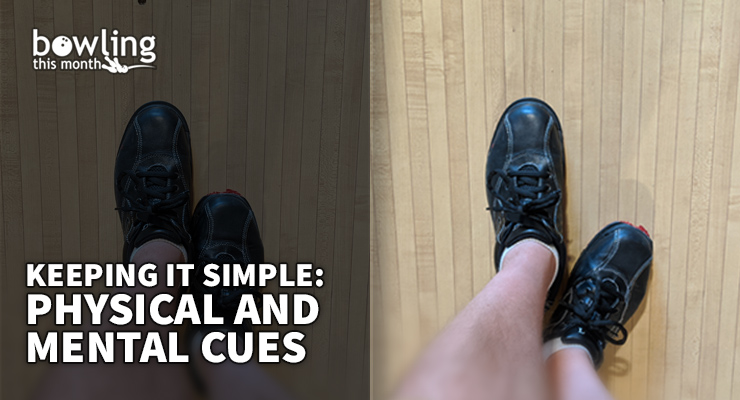Article Contents
- 1. One thing at a time
- 2. Introduction to cues
- 3. Examples of important physical cues
- 3.1. Using your stance to influence miss direction
- 3.2. Starting cue: 4.3 steps
- 3.3. Grip pressure cue
- 3.4. Balance cues
- 4. Closing thoughts
Note: This article is only available to Bowling This Month subscribers.
In this installment of the Keeping It Simple series, we’ll be covering the role of physical and mental cues. When you are struggling in competition, cues can be very effective at quickly refocusing your mind onto things you can control and immediately improving your performance.
One thing at a time
The thing that makes all sports great, and especially those sports like bowling or golf that have a lot of intricacies, is that you cannot perfect them. Nobody has, and nobody ever will. In bowling, the environment is always changing—every single shot. Just when you think you have it figured out, it changes again. It can be incredibly frustrating, or with the right state of mind, it can be a fun challenge.
Our brains don’t have the ability to focus consciously on more than one thing. To multi-task, for example, is just to change focus very quickly, but at different times, within split seconds of one another. Multi-tasking is really just bouncing back and forth quickly between tasks. It’s important to remember this when it comes to bowling because of the infinite number of variables.
How many times has a coach said something like the following to you?
“On this next shot, I want you to focus on keeping your ball-side shoulder lower, and make sure to push in your second step, and focus on keeping your head still while feeling the ball roll off your fingers.”
Forget it: it’s not going to happen. More things will go wrong than right on that shot. A quality coach might work on two or three things during a multi-hour lesson, but they will be worked on individually, separate from one another. This is because they understand how the conscious mind works and how the subconscious mind learns.
Runners occasionally will talk about experiencing “runner’s high” during a race. This has been described as an almost bliss-like state of true unconscious performance. It’s a state of mind that requires no conscious thought and ...
Already a premium member? Click here to log in.


